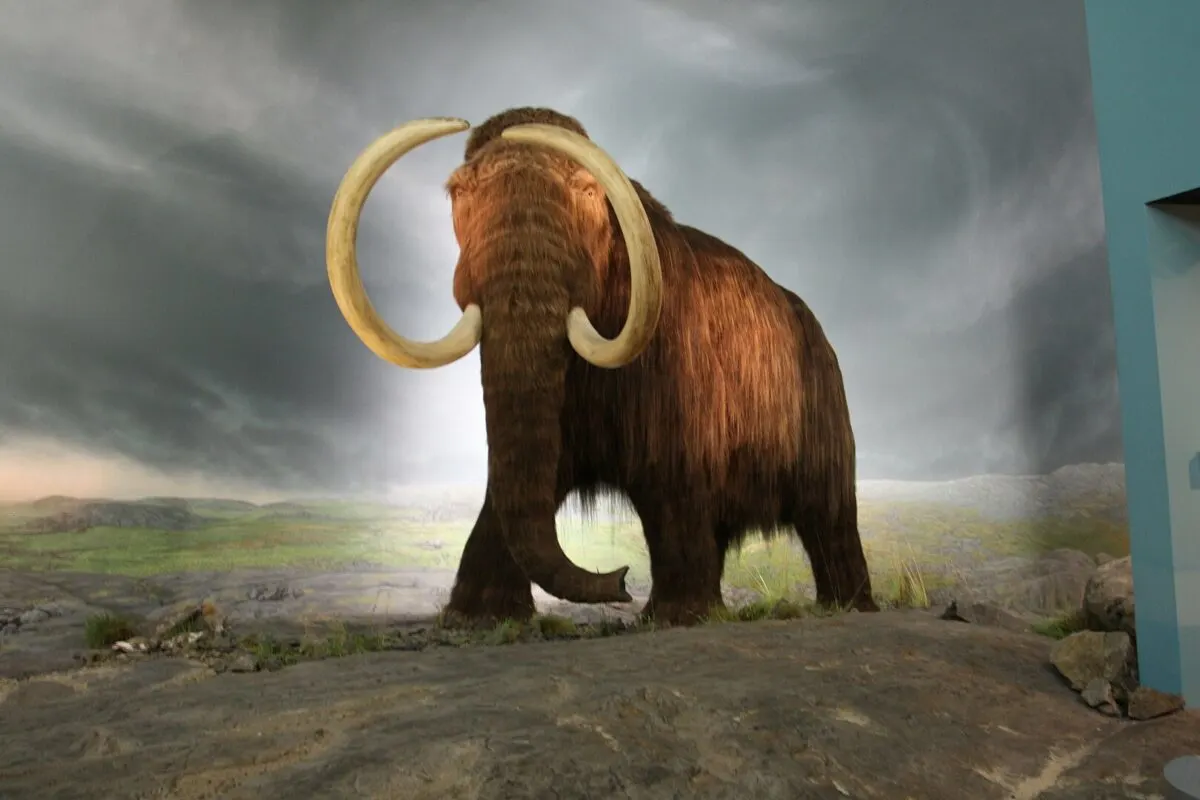Several ice ages have altered Earth’s species. These catastrophes froze Earth and changed habitats. Many species prospered by adapting to harsh surroundings. These remarkable species prove evolution’s power.
We’ll examine the top 10 ice age species’ survival. These incredible animals can educate us about life’s tenacity.
1. Smilodon
Smilodon, the ice-age saber-toothed cat, was famous. 7-inch canines distinguish it. This strong predator hunted mammoths, bison, and other large herbivores. Smilodons had strong jaws and bodies to kill their prey. It attacked prey head-on with its strong forelimbs and long canine fangs.
Despite its extraordinary adaptations, the smilodon died extinct 10,000 years ago. Scientists dispute its extinction. Human-hunted smilodon fossils show overhunting killed them. Other researchers think arid climates reduced their main prey and killed it. The smilodon demonstrated how animals may survive in harsh conditions.
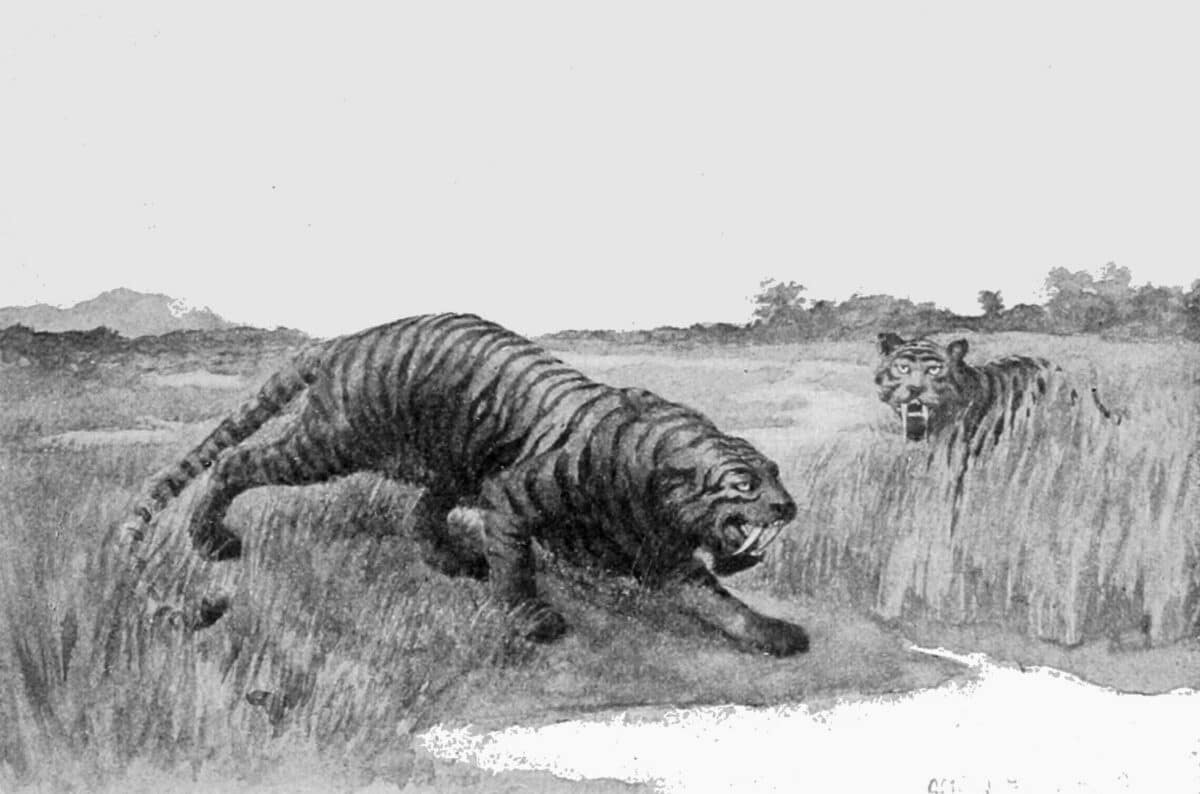
2. Wooly Mammoth
Wooly mammoths (Mammuthus primigenius) lived during the last ice age. Their long, shaggy fur coat protected the tundra. These beasts possessed 13-foot shoulders and 16-foot curved tusks. Size, strength, and other modifications let them survive the cold, whereas back fat kept them warm and stored energy. They had smaller ears to decrease heat loss and a nasal chamber that heated cold air before it reached their lungs.
However, Wooly mammoths survived cold climates, but their relationship with early humans was difficult. Early humans used mammoth bones to build art and tools. Early people revered mammoths, according to European figurines.
Wooly mammoths were extinct 4,000 years ago despite their adaptability and cultural importance. Climate change, human hunting, and disease may have exterminated them. Regardless of the cause, losing such a famous animal is a melancholy reminder of life’s fragility and the necessity to protect endangered animals for future generations.
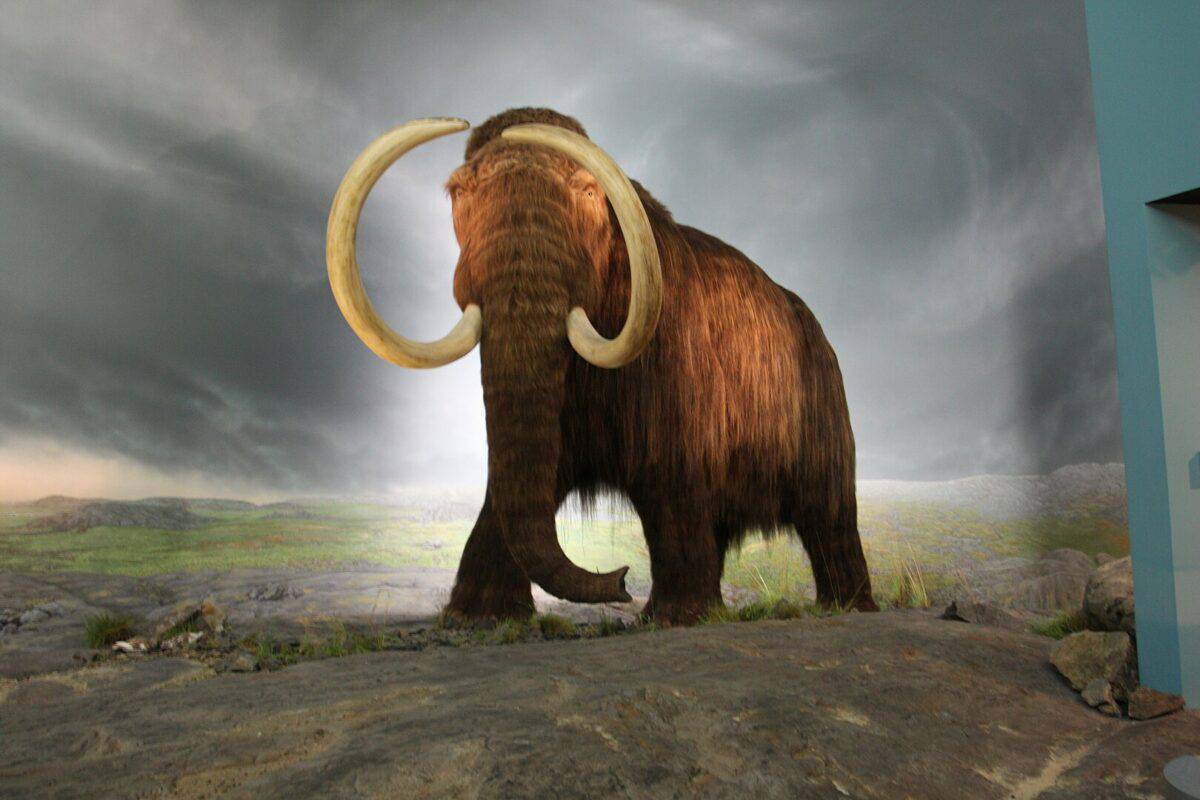
3. Irish Elk
The majestic Irish Elk, the huge deer, lived 12,000 years ago during the last ice age. It lived from Ireland to China in Eurasia. Irish Elks had 12-foot-wide antlers. Beautiful creatures with long, slender legs could grow to seven feet.
Irish Elk suited to harsh ice conditions. Their thick fur kept them warm, and their large noses let them breathe more at high elevations. Their lethal antlers were lovely. Male Irish Elk competed for territory, dominance, and mating rights during the mating season using their antlers.
Comparing modern deer to ancient Irish Elk is fascinating. Modern deer are smaller, quicker, and less adaptable to harsh temperatures and elevations. Modern deer in warmer climates shed their thick winter coats for lighter summer coats.
Most hypotheses say a confluence of events wiped out the Irish Elk. Climate change deprived the Irish Elk of food and habitat. Human hunting and environmental factors may have killed them. The cold-loving Irish Elk was fantastic. They died despite these changes.
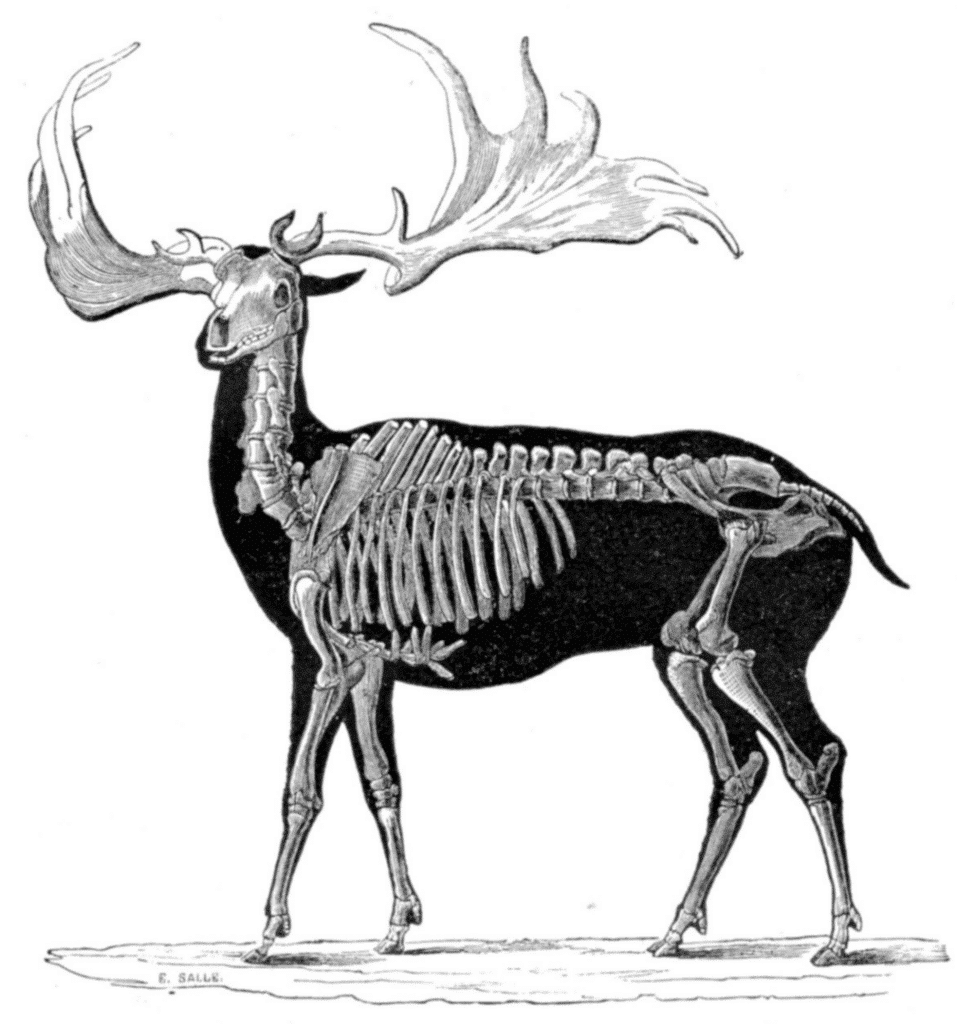
4. Dire Wolf
The dire wolf (Canis dirus) terrorized the ice period. Gray wolves are weaker. Dire wolves were four feet tall and 150 pounds. They had thick hair, powerful jaws, and gigantic bones-crushing teeth. Up to 30 dire wolves hunted bison, mammoths, and other large animals.
Dire wolves endured the cold age. They killed bigger prey than coyotes and lynxes. Dire wolves had shorter snouts and stronger jaws than modern wolves, making it simpler to bite and grip prey. Their thick fur kept them warm in winter, and their acute senses of smell and hearing made them good low-light hunters.
Notably, Dire wolf remains and early human artifacts indicate interaction. Early humans likely hunted dire wolves for fur and meal. Some believe dire wolves scavenged human kills, sparking conflicts between species.
Despite its adaptability and durability, the dire wolf and other great animals went extinct around 10,000 years after the last cold age. Climate change, predator competition, or human hunting may have exterminated them. The dire wolf lives on in popular culture and nature.
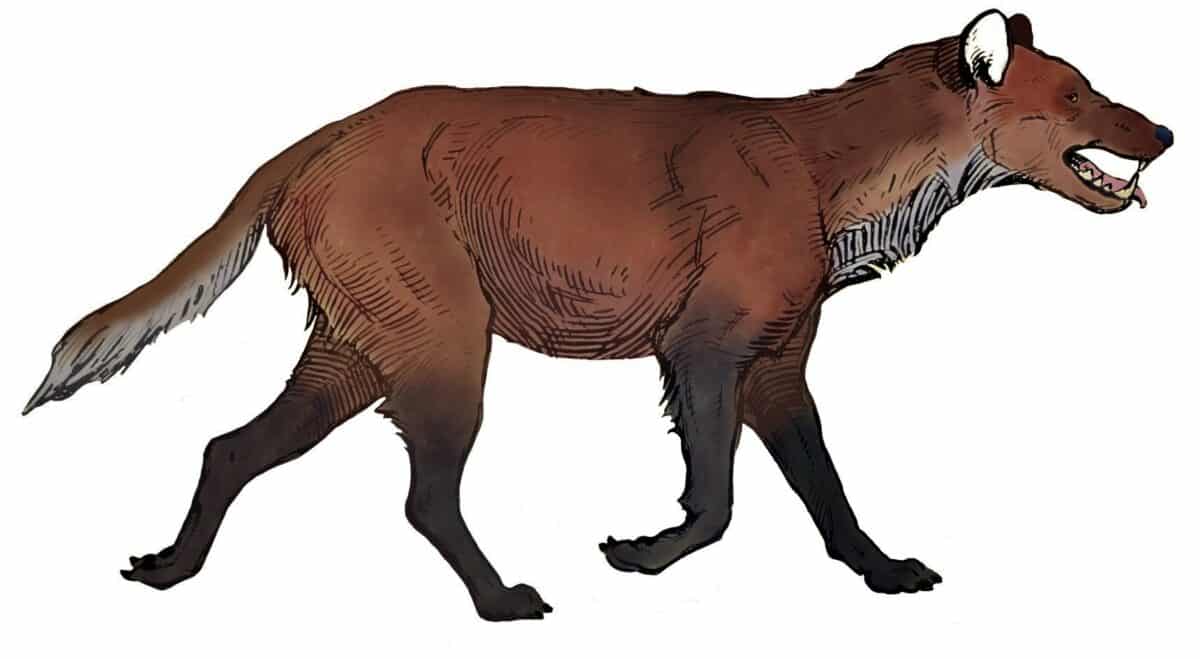
5. Big Sloth
The massive ground sloth roamed America during the ice age. Some 20-foot sloths weighed almost 4 tons. They were good climbers and warm with their thick fur. Giant ground sloths were peaceful.
Also, the massive ground sloth’s metabolism was slow. These energy-saving herbivores ate rough, fibrous vegetables. They had plant-crushing teeth, not meat-slicing ones. This maximized food options for the large ground sloth.
Post-ice age, the massive ground sloth died. Like many megafaunas, it died 8,000 years ago. Climate change, early human overhunting, and disease may have caused its extinction. Researchers debate. The extinct giant ground sloth is a remarkable example of how animals adapt to changing environments.
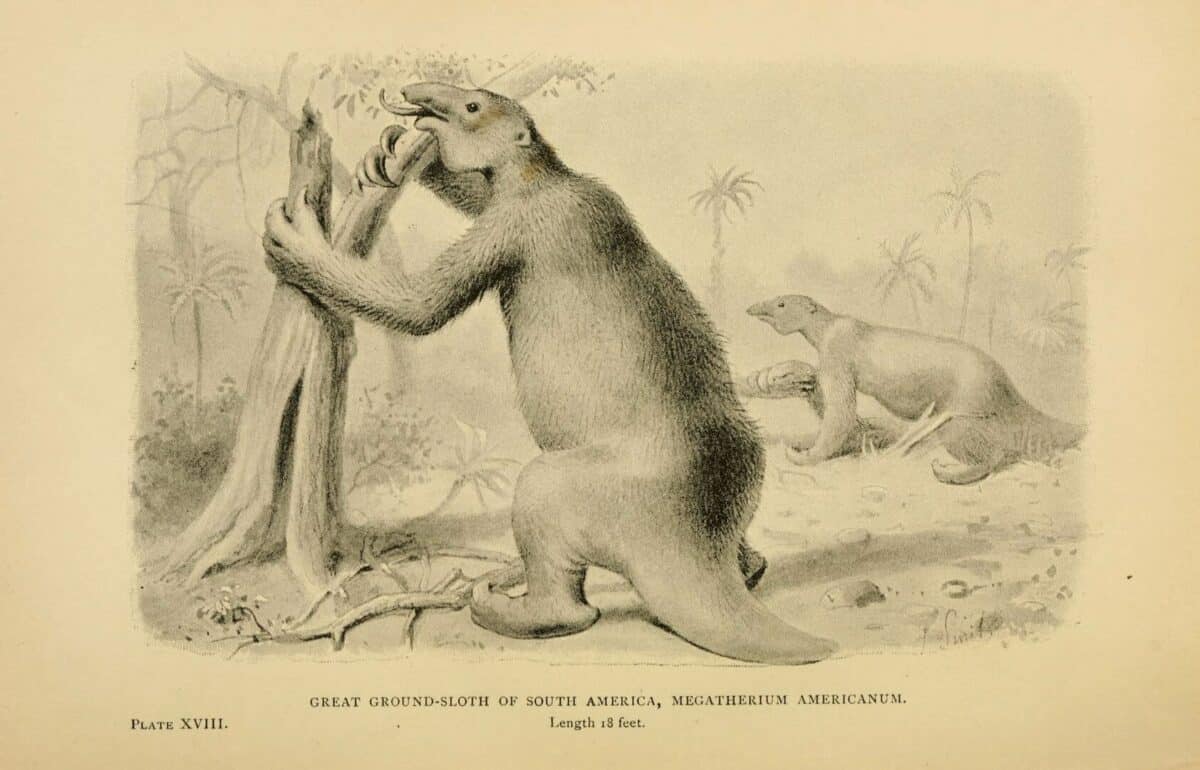
6. Cave Lion
European Pleistocene cave lions lived between 500,000 and 10,000 years ago. One of the largest big cats, it weighed 500 pounds and reached 10 feet. Cave lions had thick hair, retractable claws for ice and snow, and strong bodies for hunting.
Hunting adaptations enabled cave lions to survive the cold era. They killed mammoths and bison, but their agility and speed helped them catch deer. Their sharp fangs and retractable claws caught prey, while their thick fur kept them warm.
Cave lions were stronger, bigger, and shorter than modern lions, allowing them to attack prey more violently. They could bite harder than modern lions due to their bigger skull and shorter noses. Modern lions can catch prey faster.
Human hunting and climatic change likely exterminated the cave lion. Cave lions followed prey’s habitats as temperatures rose. Their numbers decreased as they adapted. Cave lions died 10,000 years ago.
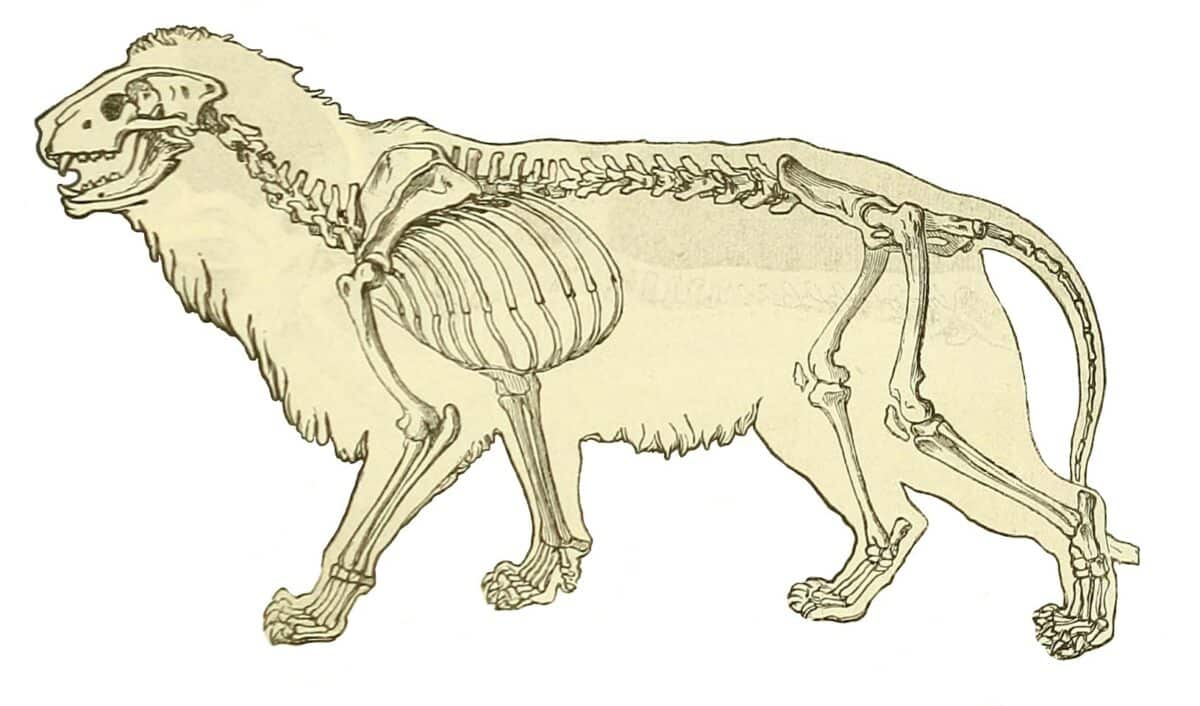
7. Musk Ox
The “ice age survivor,” the musk ox, has survived multiple ice ages. They survive Arctic winters with thick fur jackets. Musk oxen are 400–900 kg and 1.5m tall. Males have 80cm horns.
Musk oxen are cold-adapted. To avoid predators, these creatures stand in a circle. Their four-chambered stomach digests tough, low-nutrient vegetables. They can find mates and food under the snow.
Also, Musk oxen and humans coexisted for millennia. Musk oxen flesh and fur have sustained the Inuit. Fur and meat feed these cultures. After late 19th-century overhunting, conservation efforts have restored the musk ox population.
Musk oxen withstand North American and Greenlandic winters. Wildlife conservationists protect them. Climate and habitat change threaten the “least concern” species. Musk oxen and other animals survived because of their flexibility, toughness, and determination.
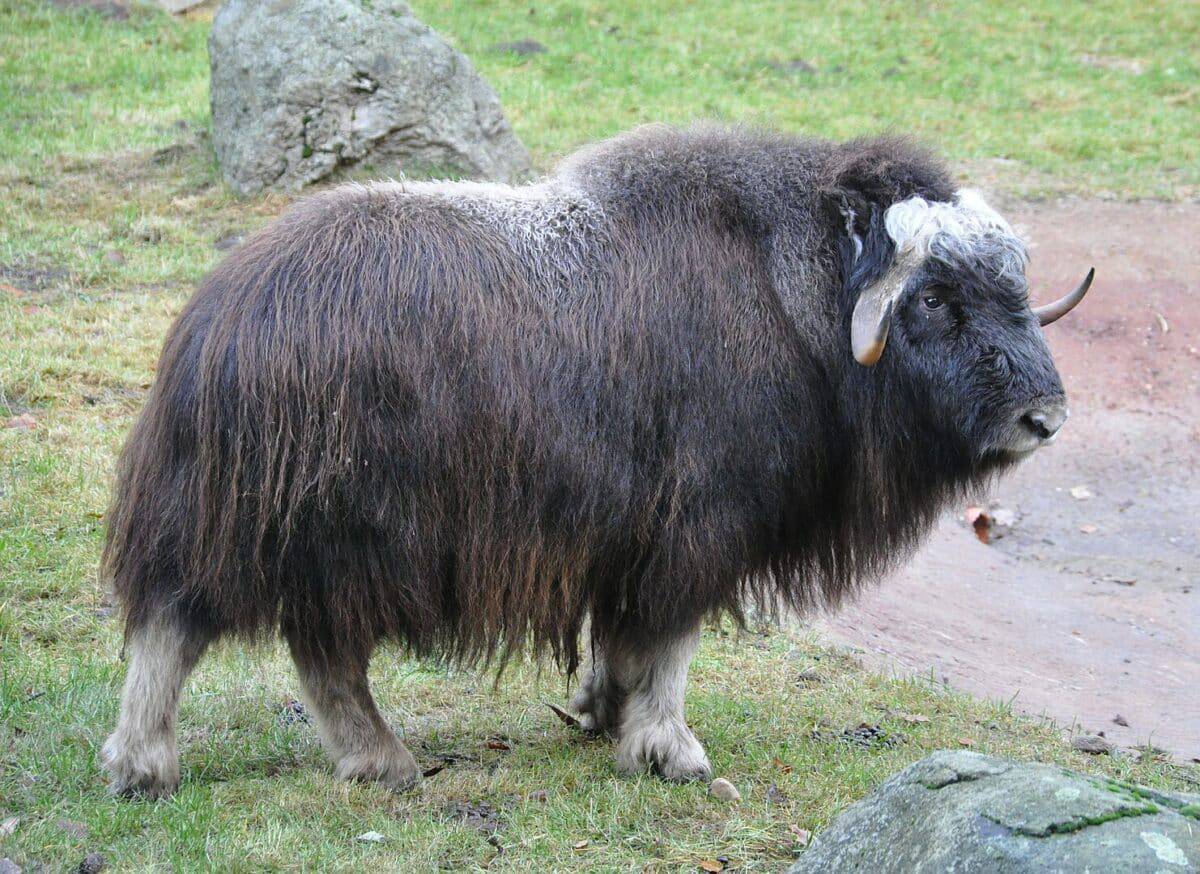
8. Steppe Bison
Huge, shaggy-haired steppe bison roamed Eurasia and North America’s verdant plains during the last ice age. The steppe bison acted like contemporary bison despite being higher and having curvier horns. These massive monsters could withstand the tundra with thick coats and heavy bodies. They ate tundra plants.
Steppe bison survived the Cold Age by long-distance migration. Steppe bison followed food sources when temperature shifted and utilized new tundra habitats. This allowed them to survive the ice age without competing with other herbivores. Their size and horns likely defended them from wolves and saber-toothed cats.
Early people needed steppe bison. Humans hunted steppe bison for meat, fur, and bones. The early prehistoric painting shows humans hunting steppe bison. These new predators forced steppe bison to change their behavior.
Steppe bison disappeared 9,000 years ago. Several factors may have caused their extinction. Climate change, habitat loss, and early human overhunting are possibilities. Sickness and genetic isolation may have killed them. Despite their disappearance, steppe bison history is fascinating and important.
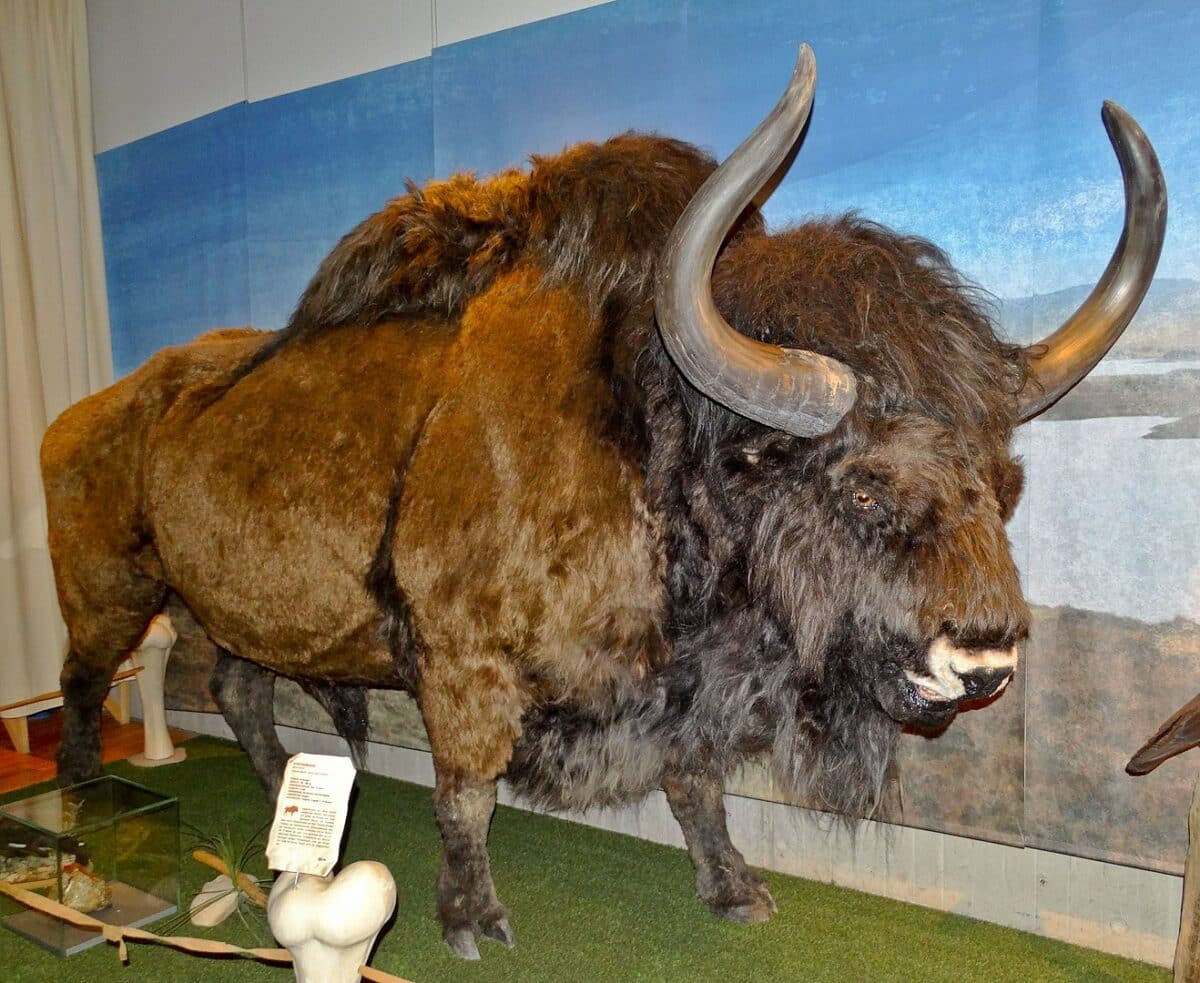
9. Big Beaver
Castoroides, North America’s final Ice Age giant beaver, was herbivorous. The two-meter, 100-kg beaver was the largest ever. The giant beaver’s 15-cm incisors could fall trees larger than modern beavers.
The huge beaver’s thick fur kept it warm and dry in tough conditions. It cuts through tough foliage and builds strong dams with its huge skull and powerful bite. The huge Ice Age beaver has a flat tail that allows it to swim in deep lakes and rivers.
Ten thousand years ago, the massive beaver went extinct. Climate change, overhunting, and competition with modern beavers who arrived in North America about the same time may have caused their extinction. Some evidence suggests the giant beaver was more susceptible to environmental pressures like disease outbreaks and food shortages than modern beavers. The gigantic beaver is a remarkable example of how animals adapt and evolve.
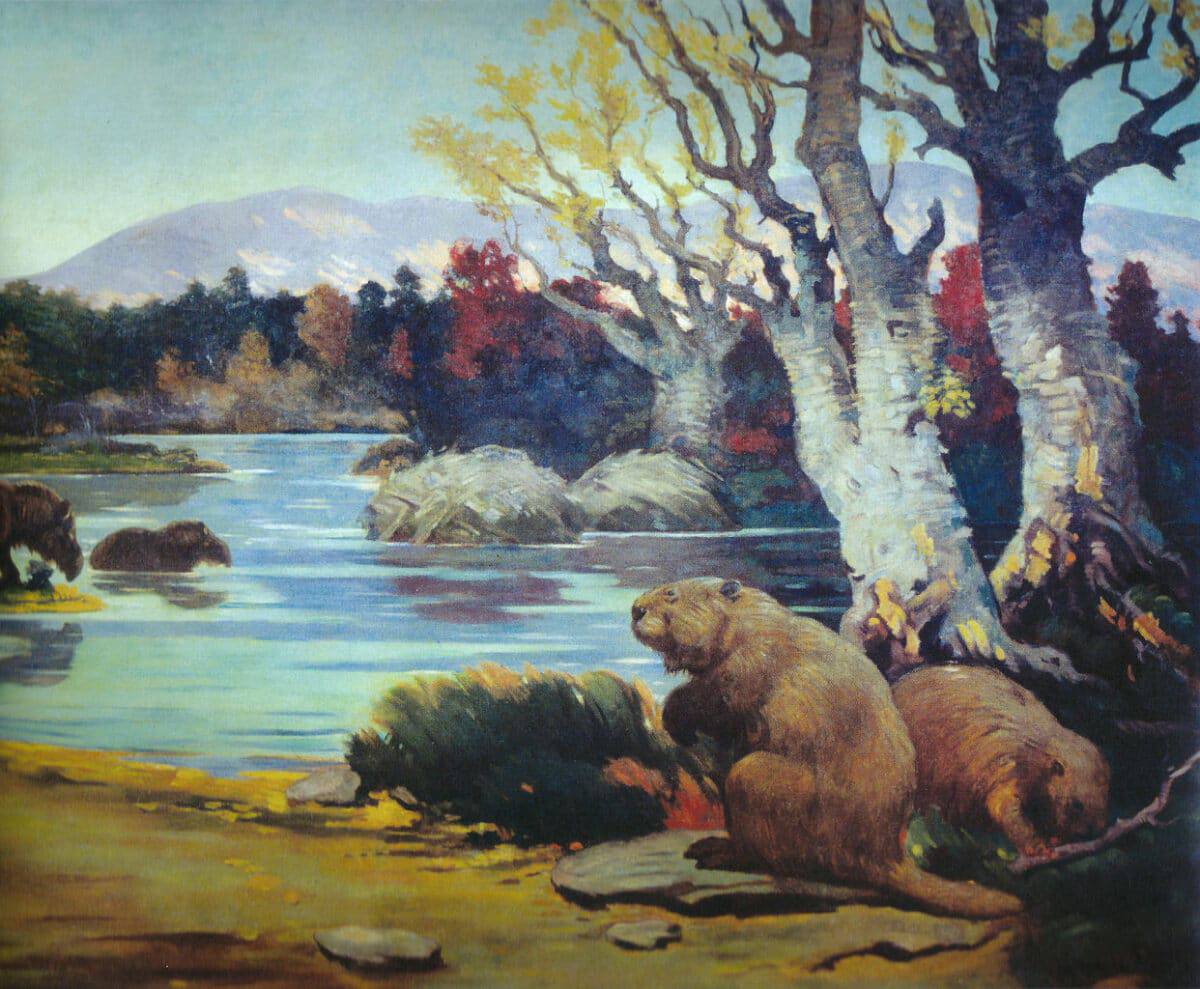
10. American Cheetah
The American Cheetah, also known as Miracinonyx, was once a dominant predator during the Pleistocene epoch but unfortunately went extinct around 12,000 years ago. It was not a true cheetah but a distant relative of the modern-day cougar.
This species was designed for speed able to run up to 60 miles per hour, making it the fastest land animal. It had long, slender limbs and a deep chest to maximize airflow. Unlike modern-day cheetahs, it was a robust and muscular animal, capable of taking down prey much larger than itself.
The American Cheetah was an apex predator in North America for millions of years before the arrival of humans and the end of the last ice age.
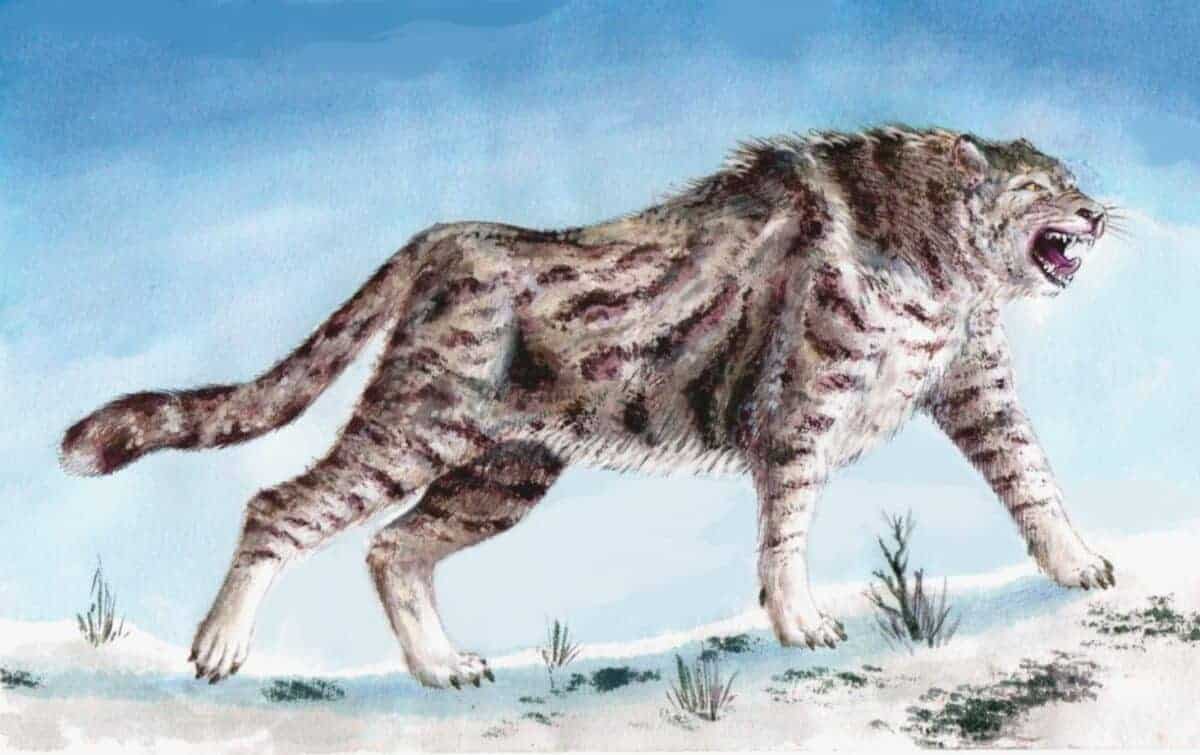
Frequently Asked Questions
How did the ice ages impact the species living on Earth?
During the ice ages, the Earth’s temperature dropped significantly, forming huge ice caps that covered large parts of the planet. Due to the dramatic climate change, many species that could not adapt or migrate to new habitats became extinct. However, some species managed to survive and adapt to the harsh environment, leading to the evolution of new characteristics that allowed them to thrive.
What kind of adaptations did the surviving species develop during the ice age?
The species that survived the ice age developed various adaptations to cope with the cold and icy environment. For example, some mammals, such as wooly mammoths and saber-toothed cats, grew thicker fur and longer tusks to help them survive in the harsh climate.
Others, like reindeer, developed the ability to live on a lichen diet, which was abundant in the barren tundra. Some aquatic species, such as narwhals, adapted to the colder water temperatures by developing a layer of fat under their skin, which helped them conserve body heat.
What can we learn from the top 10 ice age species’ survival?
The remarkable species that survived the ice ages can teach us about the power of evolution and adaptation. By studying these animals, we can better understand how species can adapt to changing environments and thrive in the face of adversity.
This knowledge can be applied to conservation efforts, helping us to protect and conserve endangered species by identifying and mitigating the impacts of environmental change. Additionally, by recognizing the tenacity and resilience of these incredible animals, we can gain a greater appreciation for the complexity and beauty of the natural world.
The Bottom Line
The frigid ages changed Earth’s biodiversity. These fascinating organisms show nature’s resiliency. The wooly mammoth and giant ground sloth adapted to the glacial eras. The wooly rhinoceros gained thick fur and fat for warmth, while the saber-toothed tiger became a fearsome predator. Earth’s 10 creatures show their diversity and tenacity. These magnificent creatures can inspire us to fight climate change. Protecting our habitat and fauna honors these wonderful ice-age animals.
If you enjoyed this article, read more on:
Battle Beneath The Ice: Penguin Evades Seal In Antarctic Waters
Join our Forum for free today!

- Usain Bolt vs. Peregrine Falcon – Speed Test in Their Domains - May 18, 2024
- Top 10 Animals in Yellowstone National Park - April 12, 2024
- Top 10 Omnivores - March 9, 2024

